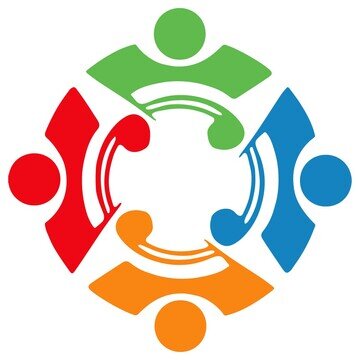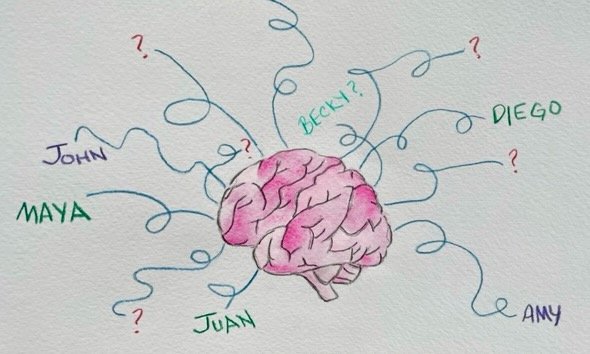13. Remember (and use) People’s Name
Data point of the week
Did you know that some people have a fear of using personal names? This has been dubbed Alexinomia, meaning “no words for names.”
According to a study on this condition, affected individuals “had the desire to use personal names in everyday social interactions, especially in their closest relationships. The phenomenological experience of alexinomia, however, is that of an inability to do so. This inability is accompanied by feelings of anxiety, panic and physical as well as psychological discomfort.”
Reflection
While most people don’t experience this level of anxiety around using names, it’s not unusual to feel some stress (have I got the name right?) or awkwardness if you’re not in the habit of using names. Like most things, it gets easier with repetition.
The practice of using names can be used with anyone and everyone—people you’ve just met, acquaintances, and friends. It’s particularly meaningful to people who regularly feel invisible, objectified, or dehumanized. For example, service providers, people who are shy or quiet, people who speak a different language and have non-English names, etc.
Using someone’s name conveys recognition, warmth, and respect, and makes people feel seen.
“A person’s name is, to that person, the sweetest, most important sound in any language.”
—Dale Carnegie
Connection Skill & Action Step: Remember (and use) people’s names
To practice this connection skill, when you meet someone new actively commit their name to memory using the strategies below. Then, use their name in conversation with them.
Focus. Have you ever asked someone their name and then not really listened to their response? I have, especially if I’m feeling anxious. Difficulty with recall often comes down to not being attentive when new information is coming in. Try to be present and focused during introductions.
Meet and Repeat. Repeat the name to yourself (or out loud) to help commit it to memory, as in, “Nice to meet you (name).”
Associate. Connect their name with something that will help you place them. For example, a friend or famous person with the same name.
Get creative. My partner is terrible at remembering names, so we often insert the names we’re trying to learn into a popular song (for example, swap out Jack and Diane for the names of the couple you just met) and add relevant lyrics. If you have a visual memory, connect their name with an image you associate with them.
Review. Repeat their name again at the end of the day to help move it into long-term memory.
If you forget, ask again. We all forget names, but the longer you wait to ask, the more awkward it gets to admit.
Questions to reflect on or to spark conversation. Please share your responses in the comments—we love hearing from you!
Do you have any tricks to help you remember names?
What does it mean to you when someone gets your name right … or wrong?
If you want people to remember your name, you can also make a memorable introduction!



